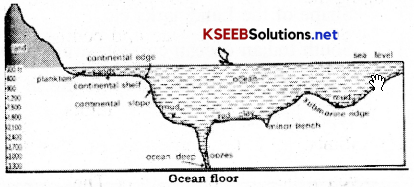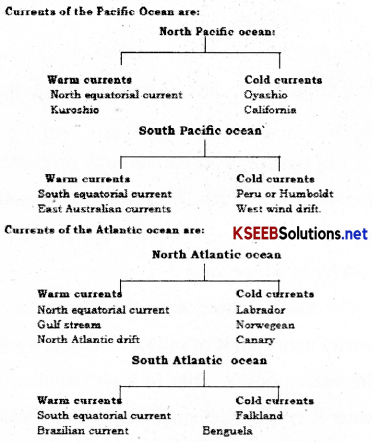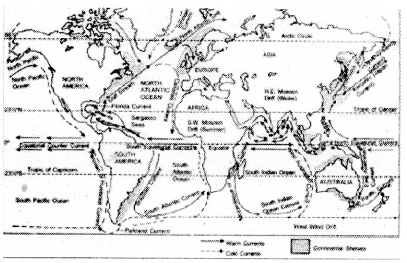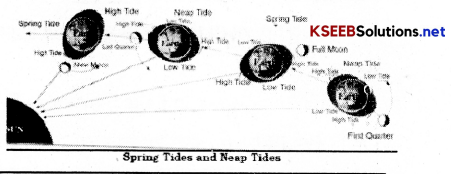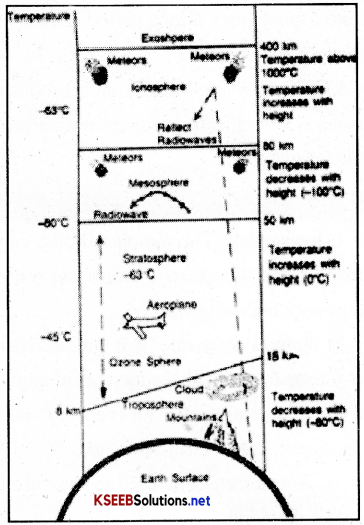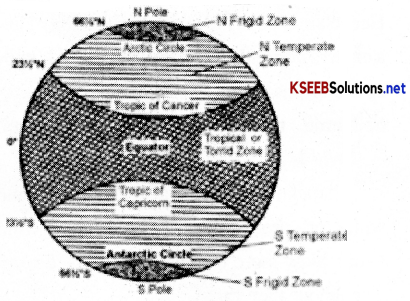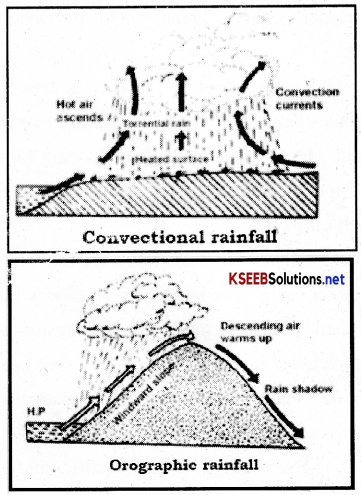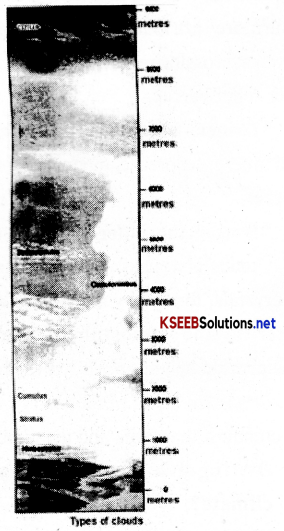Biosphere Class 8 Questions and Answers KSEEB 8th Social Science
Question 1.
What is Biosphere ?
Answer:
Biosphere is the part of the earth where life exists.
Question 2.
Define Ecology?
Answer:
Ecology is the study of the interaction of living organisms with their physical, chemical and biological environment.
![]()
Question 3.
Name the different types of environmental Pollution?
Answer:
The different types of environmental Pollutions are
- Air pollution
- Water Pollution
- Soil Pollution
- Noise pollution
Question 4.
What are the measures to control water pollution?
Answer:
The measures to control water pollution are
(a) Industrial effluents must be treated.
(b) Drinking water source must be kept clean.
(c) Sewage treatment plants.
(d) Disposal of waste on the water bodies must be controlled.
Question 5.
What is Bio-Diversity?
Answer:
The variety of flora and fauna is a region is known as bio-diversity.
![]()
II. Define the following.
1. Biosphere: Biosphere is the part of the earth where life exists.
2. Ecological imbalance: In the natural environment There is no perfect balance between the various organisms living together in the Bio-sphere. This is known as ecological imbalance.
3. Global warming: For the last few years, global temperature has increased. This phenomenon is termed as Global warming.
4. Green house effect: Increasing of green house gases is causing an increase of temperature. This is called green house effect.
5. Ozone depletion: In the recent years the use of air conditioners, refrigerators, sprays and deodorants are destroying the ozone due to the synthetic chemicals released into the atmosphere, primarily chlorofluorocarbon carbons. The ozone deflection has caused the ozone hole.
6. Acid rain: Acid rain contains high amounts acids particularly sulphuric acid arid carbon monoxide. It is caused when the rain drops pass through the polluted atmosphere.
Additional Questions and Answers
Multiple choice questions.
Question 1.
Which is one of the worst acid rain affected regions in the world
(a) South-east Germany
(b) Andaman & Nicobar Islands.
(c) Tibet
(d) Australia
Answer:
(a) South-east Germany
![]()
Question 2.
Acid rain is also referred to as
(a) Green house effect
(b) Friend of farmers
(c) Lake killer
(d) Ocean killer
Answer:
(c) Lake killer
Question 3.
The highest ozone deplection in the world is recorded in the atmosphere over.
(a) Artie
(b) Antarctica
(c) Asia
(d) Polar region
Answer:
(b) Antarctica
Question 4.
Epidemics are caused due to the pollution
(a) Air Pollution
(b) Water Pollution
(c) Soil Pollution
(d) Noise Pollution
Answer:
(b) Water Pollution
Answer the following Questions
Question 1.
What is ecological balance ?
Answer:
In the natural environment there is a perfect balance between the various organisms living together in the biosphere. This is known as ecological balance.
![]()
Question 2.
What is environment.
Answer:
Environment is the surrounding where an organism, a community or an object exists.
Question 3.
What are pollutants?
Answer:
Pollutants are the substances that cause pollution.
Question 4.
What is Air pollution?
Answer:
Substances put into the air by the activity of mankind is concentration. Sufficient to cause harmful effect to his health, vegetation and property.
Question 5.
What are the important air pollutants?
Answer:
The important air Pollutants are carbon dioxide, carbon, monoxide, sulphur dioxide, nitrogen oxide, hydro carbons etc.
Question 6.
What is water pollution?
Answer:
Water pollution is alteration in physical chemical and biological characteristics of water which may have harmful effects on human and aquatic life.
Question 7.
What is noise pollution ?
Answer:
Noise pollution is any undesirable sound dumped into the atmosphere leading to health hazard.
![]()
Question 8.
What are the measures to control air pollution?
Answer:
- Control of gaseous pollutants.
- Control of emission from automobiles.
- Planting of more trees.
- Use of non-conventional energy source.
- Awareness programme
- Legal Control
- Literacy and education
Question 9.
What are the measure taken by the government to control noise pollution?
Answer:
- Industries must be located away from the residential areas.
- Construction of sound proof walls in the factories. restructuring unnecessary use of sirens, horns and loud speakers.
Question 10.
What are the effects of global warming ?
Answer:
The warming of atmosphere is caused by greenhouse effect and trapping of heat by the atmosphere. The world getting warmers climatic zones are shifting, glaciers are melting and sea level is rising.
Question 11.
What is Acid rain ? How does it occur.
Answer:
Acid rain contains high amounts of acids particularly Sulphuric acid and carbon monoxide It is caused when the rain drops pass through the polluted atmosphere.
![]()
Question 12.
What are the effects of soil pollution.
Answer:
Soil pollution decreases the fertility of the soil, converts the region into wasteland, destroys the micro organisms in the soil etc.
